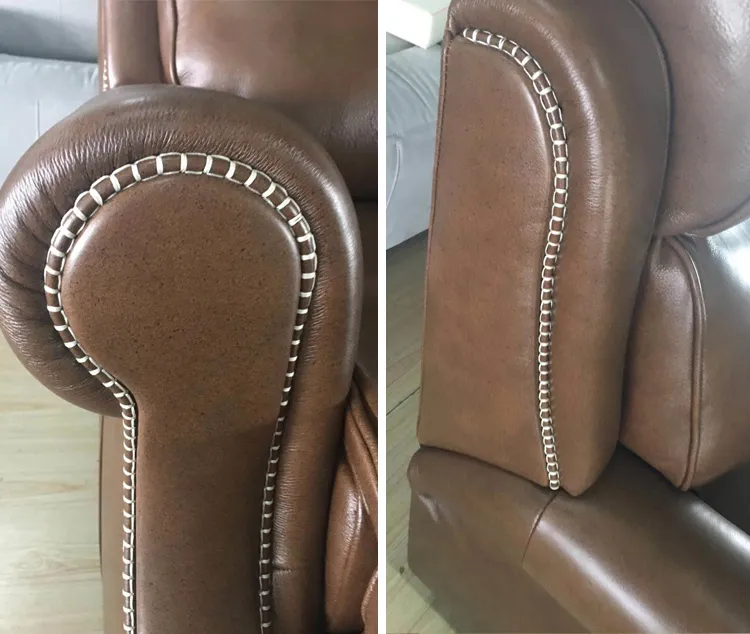Exploring the Benefits and Applications of Industrial Chain Stitch Sewing Machines in Modern Manufacturing
Understanding the Industrial Chain Stitch Machine A Key Player in Textile Manufacturing
The industrial chain stitch machine plays a vital role in the textile and garment manufacturing sectors. This machine is designed to create a series of interlocking loops of thread, forming a strong and durable seam. Its unique functionality makes it particularly suitable for various applications, from sewing lightweight fabrics to handling heavy textiles, thus underscoring its versatility and significance in modern manufacturing processes.
The Mechanism Behind Chain Stitch Machines
At the heart of the chain stitch machine is its ability to produce a stitch that resembles a chain. This is achieved through a looping mechanism involving one or two needles and at least one looper. The needle threads penetrate the fabric, while the looper captures the thread to create the characteristic loop. This innovative approach allows for greater elasticity in the seam, making it ideal for materials that require flexibility, such as stretch fabrics.
Chain stitch machines are often equipped with multiple threads, allowing them to create intricate patterns and stitches. The capability to adjust thread tension ensures that the final product maintains a high level of quality, with seams that don’t easily unravel, even under stress. This feature is particularly important in the production of clothing and textiles that endure rigorous use.
Advantages of Using Chain Stitch Machines
One of the primary benefits of industrial chain stitch machines is their speed and efficiency
. These machines are designed for high-volume production environments, capable of sewing quickly while maintaining consistent quality. This speed translates to faster turnaround times in garment production, a crucial factor in the competitive fashion industry.industrial chain stitch machine

Additionally, chain stitch seams are known for their strength. Unlike other stitching methods, chain stitches can bear significant tension without breaking, making them ideal for areas of garments subject to stress, such as armholes and seat seams. This durability not only enhances the lifespan of the garments but also reduces returns and complaints related to seam failures, which is beneficial for manufacturers.
Another advantage is the economic benefit. Chain stitching allows for lower sewing costs due to the reduction in material and labor needed to finish garments. Since chain stitches can be repeated easily without complex maneuvering, operators can maintain high productivity levels, leading to better overall profitability for manufacturers.
Applications in the Textile Industry
Chain stitch machines find extensive applications across various segments of the textile industry. For instance, they are widely used in the production of casual wear, activewear, and performance gear, where flexibility and durability are paramount. Additionally, they're employed in quilting processes, where intricate patterns are necessary, and in the sewing of decorative trims or hems, enhancing the garment’s aesthetic appeal.
Moreover, industries beyond fashion, such as upholstery and automotive textiles, utilize chain stitch technology. The resilience of the seams ensures that products can withstand the wear and tear associated with heavy use, providing manufacturers with a dependable solution for a diverse range of applications.
Conclusion
In summary, the industrial chain stitch machine is an indispensable tool in textile manufacturing. Its unique stitching mechanism, combined with advantages like speed, durability, and cost-effectiveness, positions it as a preferred option for many manufacturers. As the textile industry continues to evolve, innovations in chain stitch technology are likely to enhance its capabilities further, solidifying its status as a key player in the production of high-quality garments and textiles. As manufacturers seek to balance efficiency with quality, the industrial chain stitch machine remains a cornerstone of successful apparel production strategies.
-
Leather Sewing Machine: The Industrial Standard for Tough MaterialsNewsJul.18,2025
-
Sail Making Machine: Heavy-Duty Stitching for Industrial and Marine NeedsNewsJul.18,2025
-
Sling Sewing Machine: The Backbone of Heavy-Duty FabricationNewsJul.18,2025
-
Leather Sewing Machine: Precision for Heavy-Duty StitchingNewsJul.18,2025
-
Big Bag Sewing Machine: Powering the Future of Bulk PackagingNewsJul.18,2025
-
FIBC Sewing Machine: Essential Equipment for Bulk Bag ProductionNewsJul.18,2025
-
Heavy Duty Leather Sewing Machine: A Must-Have for Professional LeatherworkNewsMay.28,2025





























